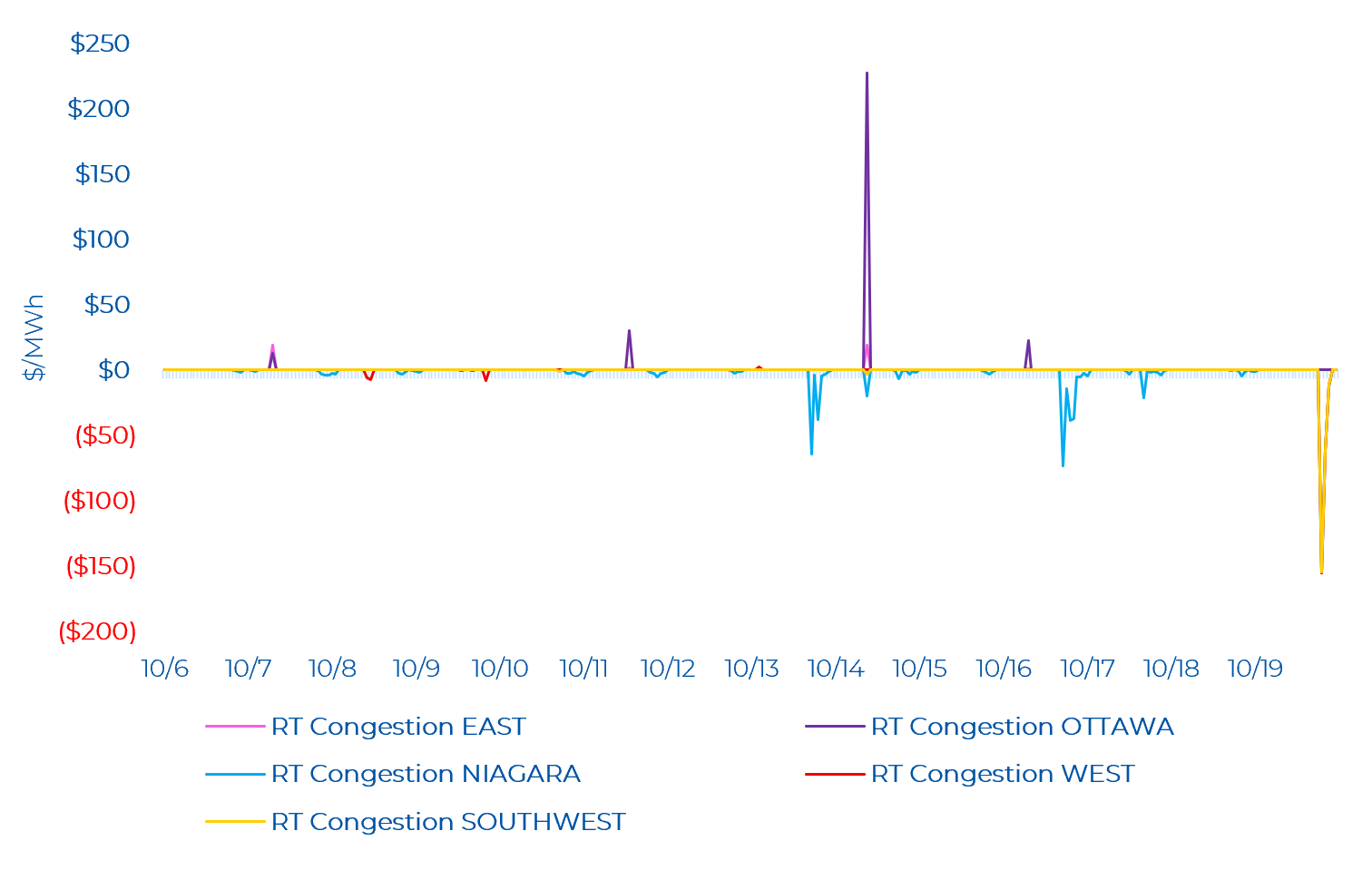Blocked Dispatches by the IESO Remain Elevated in September (Dispatch Deviation Report)
The IESO has released the Dispatch Deviation report for September. Although market interventions have decreased from August, they remain elevated compared to September 2024. There were 7,981 blocked and one-time dispatches for the month – averaging 0.9 IESO interventions to the dispatch algorithm every 5 minutes (noting 5-minute intervals can experience multiple interventions). Compared to September 2024, September 2025 recorded 4.3 times more total interventions (blocked and one-time dispatches).

Day-Ahead and Real-Time Price Trends by Components and by Zone
The last two weeks saw Day-Ahead (DA) prices move lower and Real-Time (RT) zonal prices move higher compared to the previous two weeks. DA zonal prices ranged from $48/MWh (Niagara) to $63/MWh (Northwest), while RT zonal prices ranged between $50/MWh (Niagara) to $64/MWh (Northwest). Similar to the previous Review, the Northwest zone was the highest priced zone across the IESO-Administered Market (IAM) – highlighting the unique congestion conditions facing that zone.
The DA and RT price by zone and by component for the past two weeks is shown below.

Day-Ahead and Real-Time Prices
The average hourly day-ahead OZP was $56.98/MWh over the two weeks, while the real-time OZP was $57.34/MWh. There were 15 real-time hourly OZP spikes greater than $200/MWh. Most of these price spikes occurred in evening hours when demand is changing rapidly. The highest real-time OZP was $454.66/MWh (on October 10, HE 18). Ontario demand increased by 238 MW from the previous hour with supply from gas increasing by 287 MW (simultaneously, there was an increase in exports by 346 MW, mainly to Michigan). The peak Ontario Demand over the last two weeks was 20,335 MW (on October 6, HE 17). The peak demand on October 10 – when OZP hit its highest level – was 16,450 MW at HE 18.
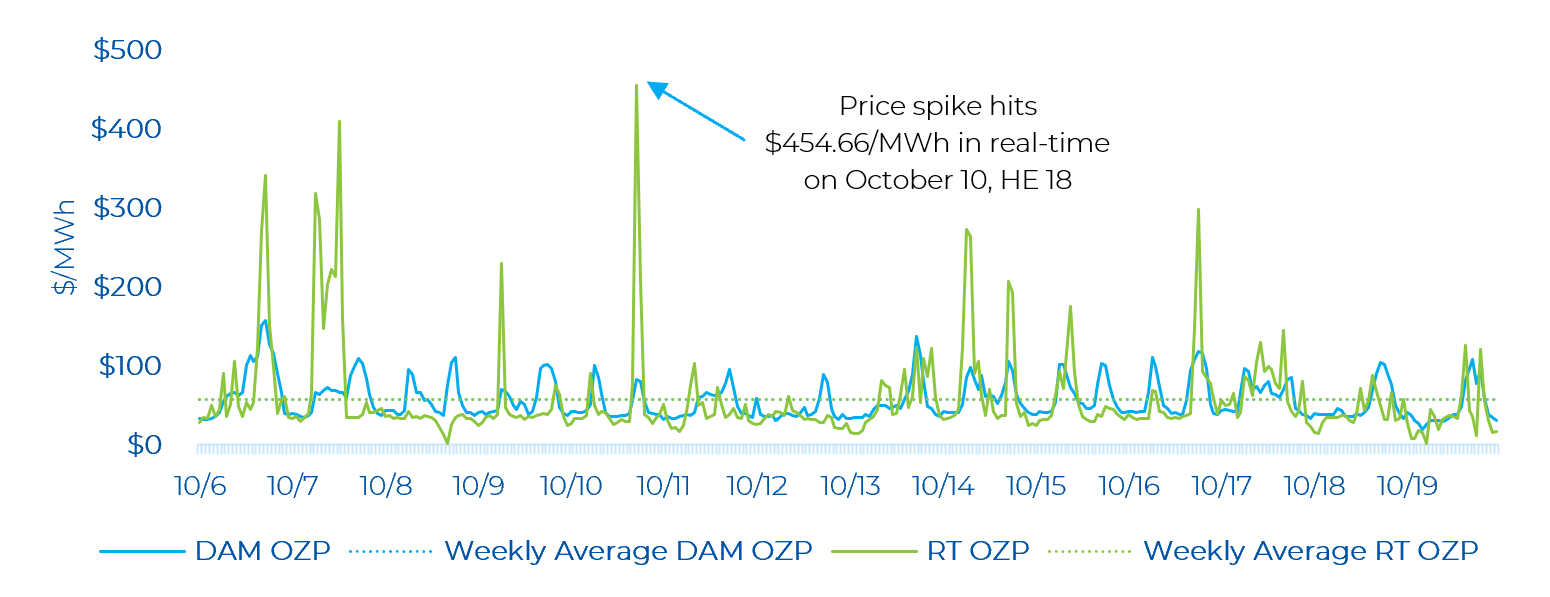
OR Prices
There were multiple real-time Operating Reserve (OR) price spikes in the last two weeks. The average weekly day-ahead 10S price was $13.96/MW, while it was $14.63/MW in real-time. The highest OR price spike of $422.11/MWh was coincident with the highest real-time OZP spike observed in the last two weeks. As noted throughout our commentaries, OR prices remain highly elevated compared to prices in the legacy market.

The highest day-ahead OR price was $159.47/MWh, which occurred on October 19, HE 18. The day-ahead energy price was $107.36/MWh at this time.
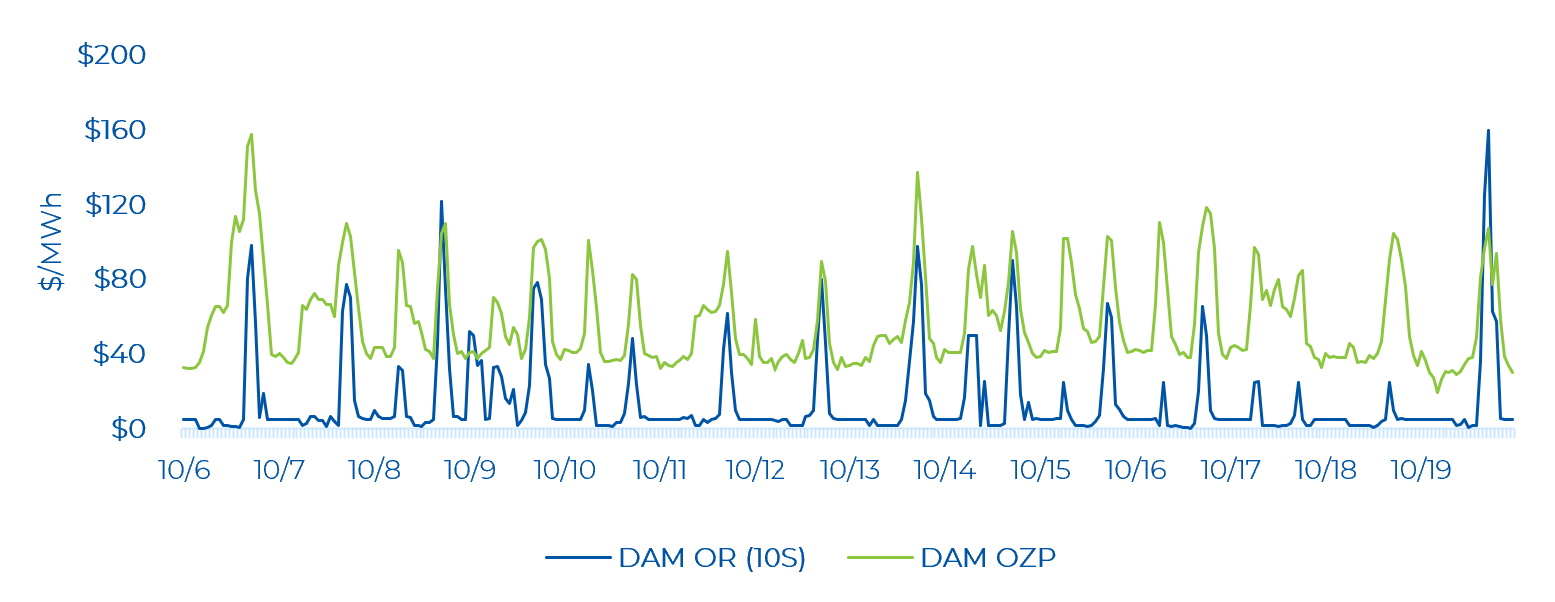
Real-time OR prices were low (i.e., near $0.10/MWh) for many hours. There were several real-time OR price spikes throughout the last two weeks, coincident with real time OZP spikes. The highest real-time OR price was $422.11/MWh on October 10, HE 18.
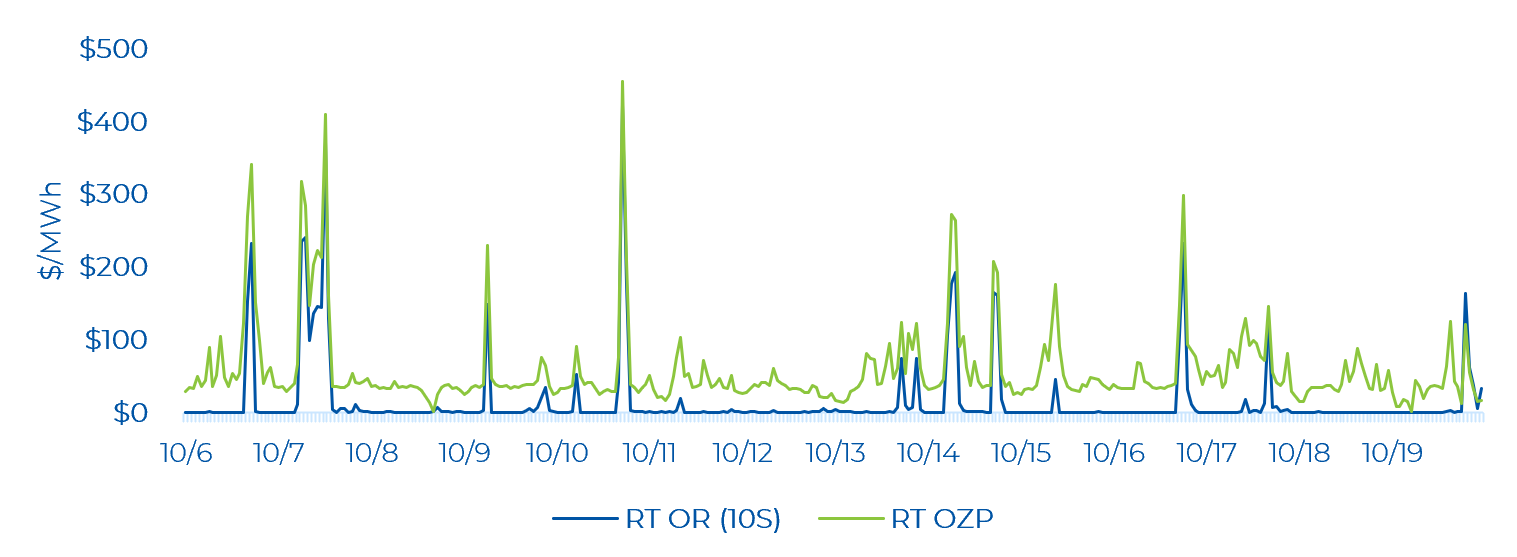
Zonal Prices and Congestion
For the last two weeks, the number of congestion (positive and negative) hours was high for the Northwest and Niagara zones in the day-ahead time frame. The Niagara zone observed negative congestion, most of which were relatively minor (close to -$5/MWh), but occasionally exceeding -$20/MWh. Congestion in the Niagara zone reached a low of -$65.94/MWh. The Southwest and West zones saw minor congestion for most of the week with a few hours of extreme congestion. The Northeast zone observed a couple hours of positive congestion mainly concentrated in the late night to early morning hours, with a high of $38.56/MWh. The Ottawa zone saw a few hours of positive congestion, with a high of $60.78/MWh. The East zone had some minor positive congestion.
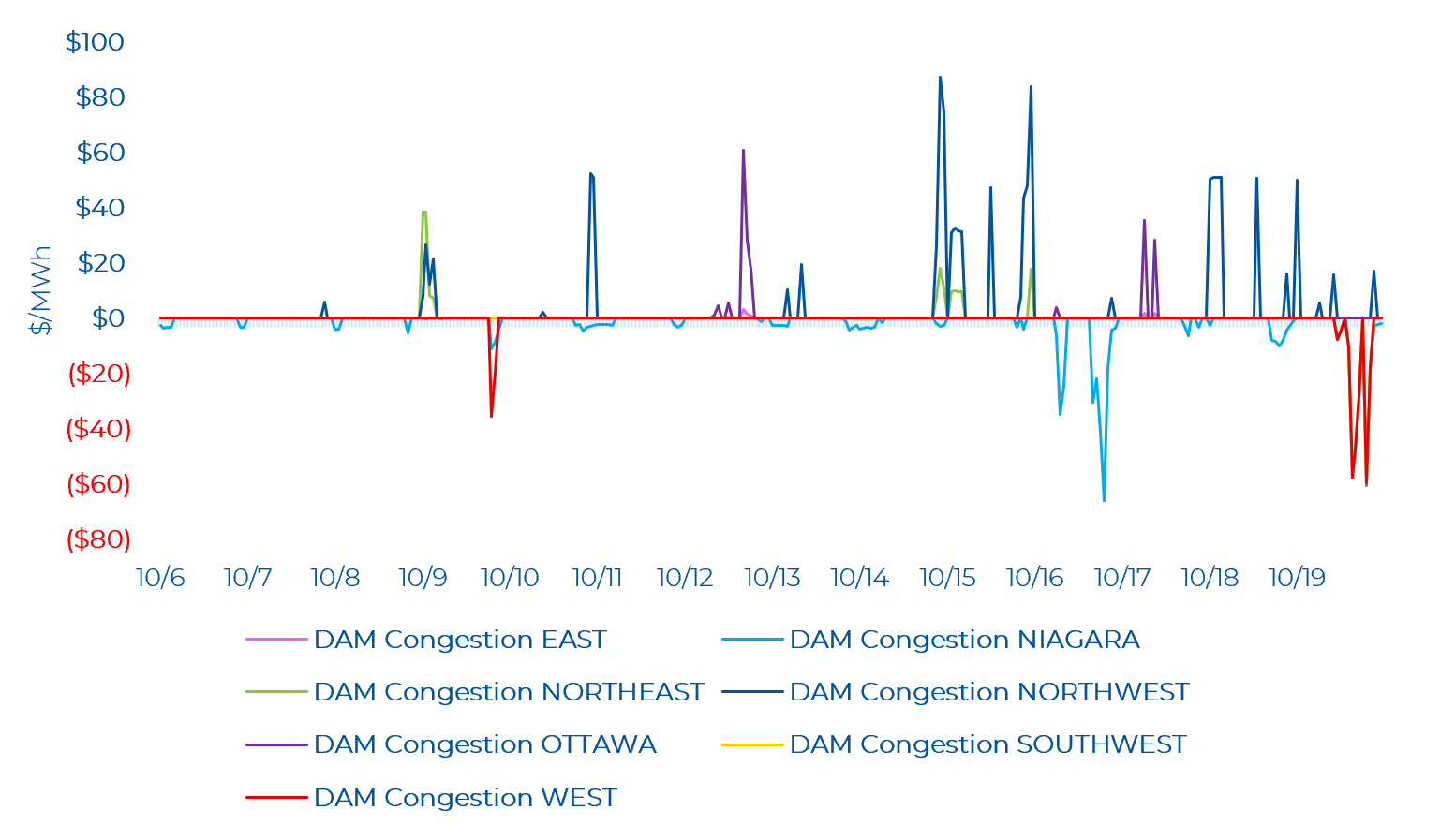
Real-time zonal prices in the Northwest zone remain volatile – with the Northwest seeing frequent hours of positive congestion with some swings to negative congestion. The Northeast also observed congestion but at a lower magnitude – with some swings from positive to negative congestion. The Northwest saw a low of -$105.79/MWh and a high of $613.11/MWh (on October 9, HE 21). Congestion may have been more pronounced due to outages across these Northwest-zone connected interfaces: East-West Transfer East (EWTE)/East-West Transfer West (EWTW) – although to note, these outages did occur each day of the two weeks. The Northeast zone saw a low of -$26.29/MWh and high of $14.77/MWh
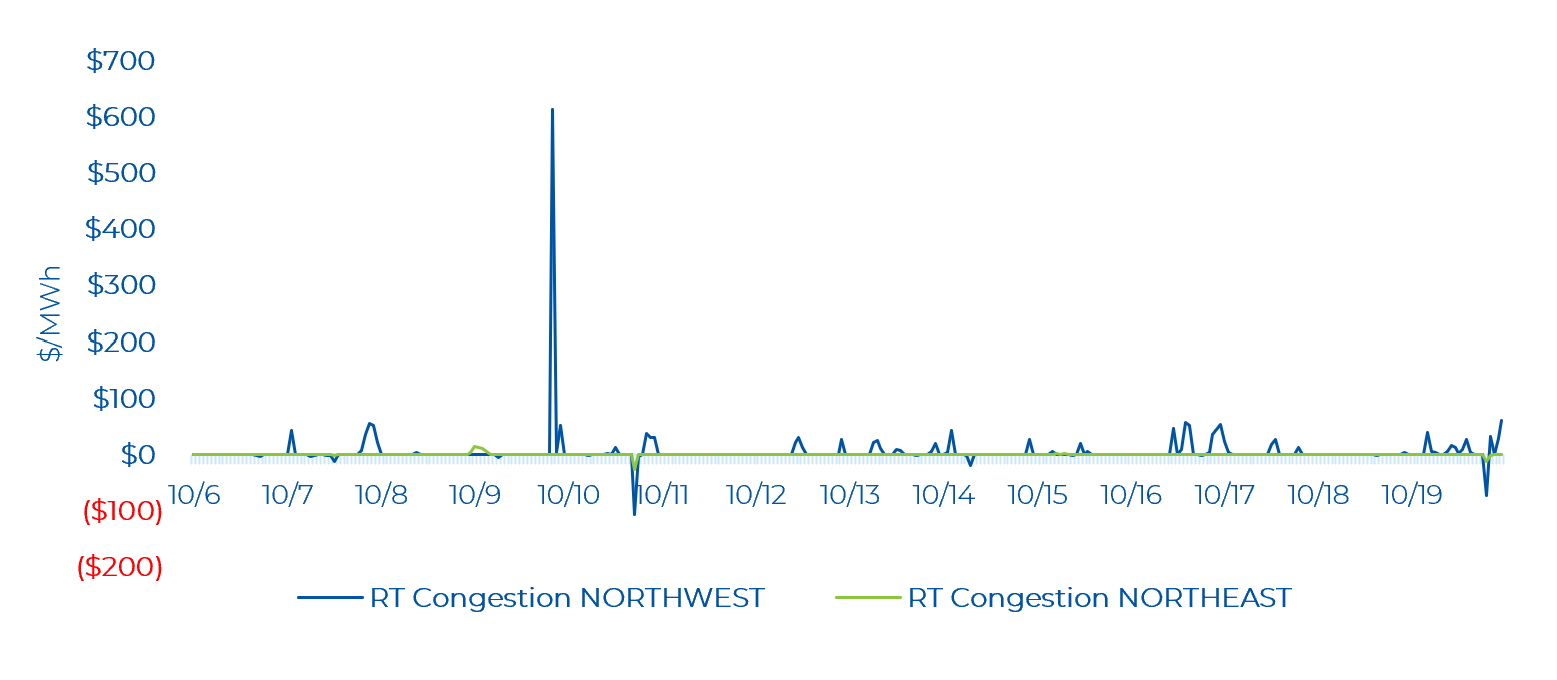
In real time, the Niagara (and Northwest) zone was the most congested with some extremes observed for the Ottawa, Southwest, and West zones. The Niagara zone observed negative congestion in several consecutive hours. The Niagara zone saw a low of -$155.16/MWh on October 19, HE 20. At this hour, the Southwest and West zones also experienced identical congestion. Aside from this hour, the congestion in the Southwest and West zones were minor. The Ottawa zone saw a high of $227.10/MWh on October 14, HE 10. At this hour, the East zone also observed a peak congestion of $19.10/MWh. There was also an outage/limit on the Flow Into Ottawa (FIO) interface each day of the last two weeks, which could have made the congestion more pronounced in these connected zones. Note, that at each hour Ottawa experiences congestion, the East zone (which is neighbouring to the Ottawa zone), also experiences congestion. Congestion in several zones continue to persist – even at hours where demand has not changed significantly from the previous hour (pointing to potential zonal supply and/or transmission limit changes).
